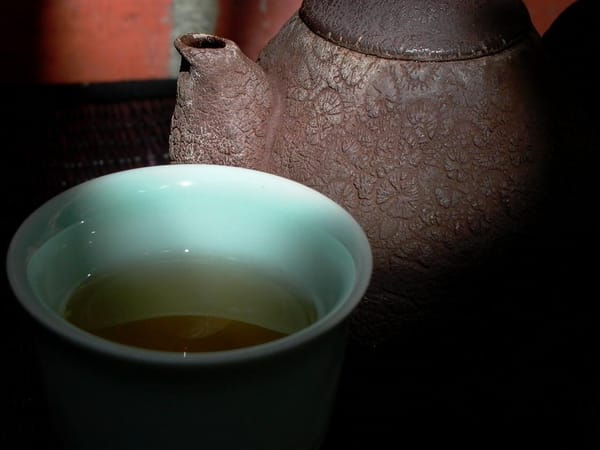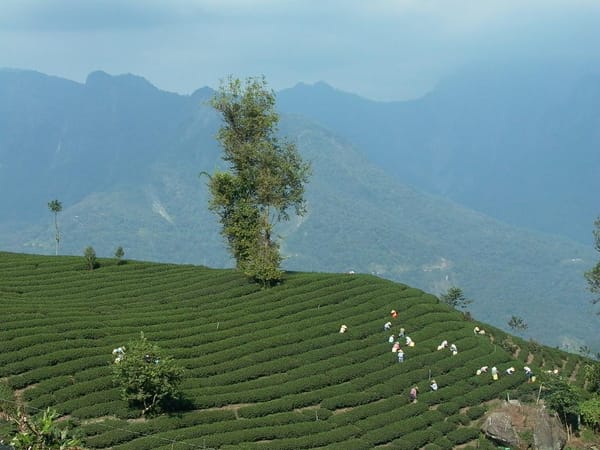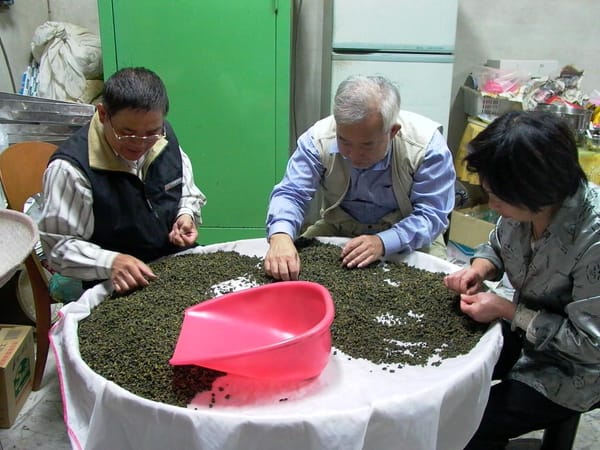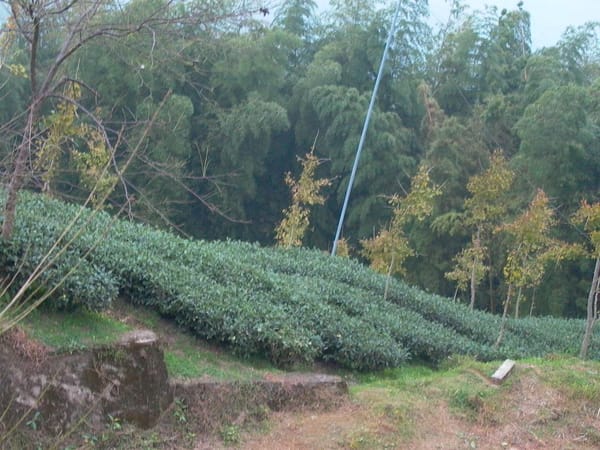Step into the Taiwan Tea Research and Extension Station (TRES), and you’ll find a precious record of tea breeding history — the complete documentation from TTES No.1 to No.18. These eighteen cultivar numbers represent not only eighteen varieties of tea plants, but also nearly a century of scientific innovation and dedication in Taiwan’s tea industry.
From the naming of the first batch — TTES No.1 to No.3 in 1969 — to the release of No.14 to No.17 in 1983, each number is backed by rigorous research and countless efforts from tea professionals. This is a story of how science made tea trees more suitable for Taiwan’s land and more aligned with market preferences.
Let’s follow this breeding timeline to explore the rich results of Taiwan’s cultivar development and understand the scientific principles and market thinking behind each variety.
The Starting Point of Taiwan Tea Breeding
Taiwan’s formal tea breeding records date back to 1910, when the Pingzhen Tea Experiment Station (the predecessor of TRES) began seed propagation and selection trials. In 1918, the station selected Taiwan’s four foundational cultivars: Qingxin Damao, Daye Oolong, Yingzhi Hongxin, and Qingxin Oolong.
These cultivars became the cornerstone of Taiwan’s tea industry. Qingxin Oolong was confirmed as the best for making oolong tea. Before 1945, Qingxin Oolong was the dominant cultivar. However, after WWII, Taiwan shifted toward green tea production, making Qingxin Damao the more widely planted variety. By 1953, its cultivation area surpassed Qingxin Oolong.
This transition reflected adjustments in Taiwan’s tea strategy and laid the groundwork for future scientific breeding.
Phase 1: Foundation Years (1969–1975)
TTES No.1 (named in 1969) marked the start of scientific breeding in Taiwan. It was a hybrid of Qingxin Damao and Kyang. This cultivar exhibited vigorous growth with a spreading form and yielded up to 4,377 kg/ha with hand-plucking. It had excellent resistance to pests, drought, and was suitable for black tea, eyebrow tea, and oolong. It mainly adapted to northwestern Taiwan.
TTES No.2, also from 1969, was a cross of Daye Oolong and Jaipuri. Though slightly lower yielding (3,742 kg/ha), it had similar resilience and suitability.
TTES No.3, bred from Hongxin Damao and Manipuri, had mid-season sprouting and upright growth. It had wide processing versatility — suitable for oolong, green, and pouchong tea — contributing to Taiwan’s tea diversification.
In 1973, TTES No.4 to No.6 were introduced.
TTES No.4, also from Hongxin Damao × Manipuri, had late sprouting and moderate growth, well-adapted to the eastern Hualien region.
TTES No.5, naturally hybridized from the Fuzhou lineage, sprouted extremely early and was suitable for northwestern and high-mountain regions — paving the way for future high-mountain tea zones.
TTES No.6, from natural hybridization of Qingxin Oolong, had strong vigor and drought resistance, offering another quality option for northwest Taiwan.
Phase 2: Specialized Development (1973–1975)
This phase marked a shift to function-specific cultivar development.
TTES No.7 and No.8 (both 1973) were designed specifically for black tea production.
No.7, selected from a Shan single plant, had extremely high yield — 13,223 kg/ha — the highest among all TTES cultivars.
No.8, selected from Jaipuri, also had high yield (7,959 kg/ha). Both were ideal for central and eastern Taiwan.
TTES No.9 and No.10 (1975) focused on green and black tea, adapted to Taitung and Hualien.
TTES No.11 targeted northeastern Taiwan, offering region-specific solutions.
Phase 3: The Oolong Tea Era (1981–1983)
In the 1980s, Taiwan entered its golden era of oolong tea, and breeding focus shifted accordingly.
TTES No.12 (Jin Xuan, 1981) became a milestone. A cross of Tainong No.8 and Yingzhi Hongxin, it was ideal for oolong and pouchong teas. Known for its milky aroma, Jin Xuan became a consumer favorite and a market success.
TTES No.13 (Tsui Yu, 1981), a hybrid of Yingzhi Hongxin and Tainong No.80, also targeted oolong and pouchong. Its elegant floral scent and sweet taste made it a perfect counterpart to Jin Xuan — the iconic duo of Taiwan’s modern tea.
These two cultivars redefined Taiwan’s tea flavor profile and reflected a modernization of consumer taste.
Phase 4: Precision and Diversification (1983)
1983 was a bumper year for breeding, introducing TTES No.14 to No.17.
No.14, a cross of Tainong No.983 × Baimohou, adapted to central-northern and high-mountain semi-fermented zones.
No.15, with the same parentage, was suitable for mid-low elevation semi-fermented zones and white tea, demonstrating diversified utility.
No.16 and No.17, hybrids of Tainong No.335 × Tainong No.1958, had very early sprouting and strong vigor.
No.16 was best for early spring green tea and summer Shoumei tea in northern Taiwan.
No.17 targeted medium-scale semi-fermented production zones.
Reference Cultivars: Qingxin Damao & Qingxin Oolong
Among all cultivars, Qingxin Damao and Qingxin Oolong serve as reference cultivars. These indigenous elite varieties represent the legacy of Taiwan tea.
Qingxin Damao has a balanced shape and distinctive leaves, suitable for oolong, green, and pouchong tea — widely grown across Taiwan.
Qingxin Oolong, though weaker and less resistant, is revered as the ideal cultivar for oolong tea, especially in western Taiwan and high-mountain regions.
Their genetic traits remain the foundation for many TTES varieties.
Scientific Principles Behind Breeding
Taiwan uses diverse scientific methods — hybridization, single-plant selection, and natural crossing. Key breeding goals include:
- Adaptability: Cultivars optimized for diverse climates, from lowlands to high mountains, across Taiwan.
- Yield Performance: Ranging from 2,312 to 13,223 kg/ha to fit various farming models.
- Resistance Traits: Emphasis on pest and drought resistance for sustainable cultivation.
- Processing Suitability: Targeting market-specific needs — black, green, and oolong tea types — for product specialization.
Market Impact of Cultivar Promotion
The success of TTES No.12 (Jin Xuan) and No.13 (Tsui Yu) highlights the value of scientific breeding. These cultivars gained strong domestic demand and established a distinctive Taiwanese tea image globally.
Jin Xuan’s creamy aroma and Tsui Yu’s floral elegance offered modern consumers a new flavor experience beyond traditional oolong — raising the bar for quality and taste.
Ongoing Progress in Breeding
Taiwan’s breeding continues today, adapting to climate change, market shifts, and technological advancement. Modern goals include:
- Stability in quality
- Environmental adaptability
- Suitability for mechanical harvesting
- Compatibility with organic farming
Future cultivars aim to meet evolving needs while preserving Taiwan’s unique tea identity.
The Legacy of TTES Cultivars
From No.1 to No.18, Taiwan’s breeding journey reflects a shift from traditional agriculture to scientific innovation. Each variety carries historical and strategic significance — forming a diverse genetic foundation for the tea industry.
These cultivars enhance both the quality and yield of Taiwan teas, strengthening competitiveness on the global stage.
Every cup brewed from these cultivars tells a story of scientific precision, innovation, and the enduring spirit of tea.
Looking ahead, Taiwan will continue developing new cultivars to meet future challenges, while honoring the legacy of classics. The achievement from TTES No.1 to No.18 stands as a vital asset for the sustainable growth of Taiwan’s tea industry.





